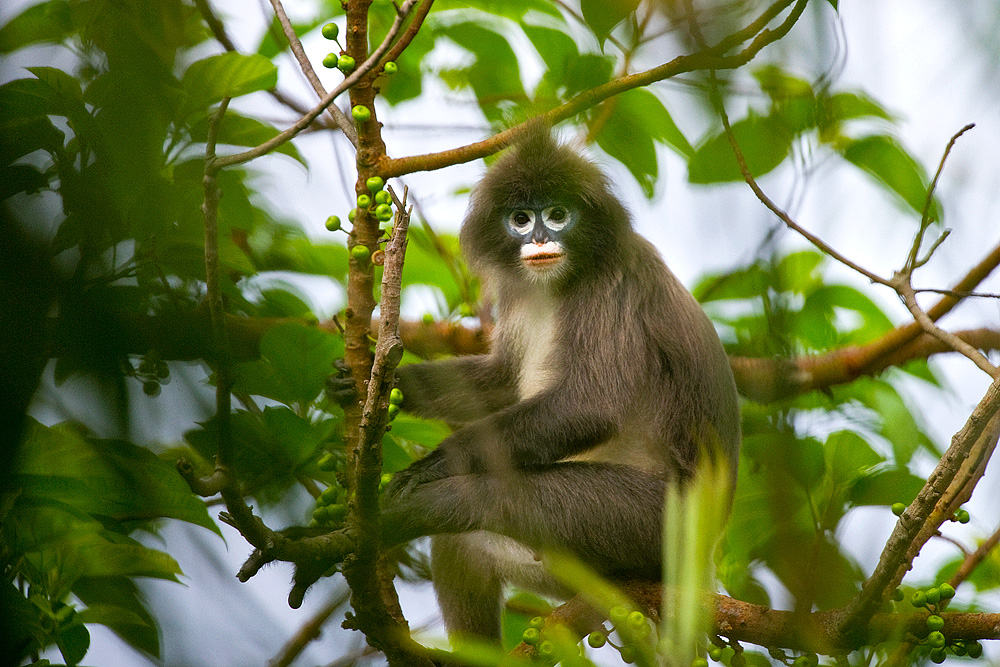
Phayre’s Leaf Monkey (Trachypithecus phayrei) is known for its beautiful ‘spectacled’ looks and was once widely distributed in Southeast Asia from eastern Bangladesh, southwestern China (southern, western and central Yunnan), northeastern India (Assam, Mizoram, and Tripura), Lao PDR, Myanmar, Thailand (north of the peninsular zone) and northern Vietnam. However, this species is listed as endangered as it has lost more than 50% of its population in the last 35 years. This is mainly because of loss of habitat due to jhum (slash and burn) cultivation, timber logging and hunting.
The Indian subspecies of Phayre’s leaf monkey (Trachypithecus phayrei phayrei) is a schedule 1 species under the Wildlife (protection) Act. Populations of this subspecies are small and isolated though locally common, which makes them susceptible to in-breeding. The species prefers primary and secondary evergreen and semi-evergreen forest, mixed moist deciduous forest, but is also found in bamboo-dominated areas, light woodlands, and near tea plantations. This is a predominantly arboreal, diurnal, and folivorous (specializes in eating leaves) species (Molur et al. 2003).
Tripura is a stronghold of this species in India where it is found mainly in three protected areas, Sipahijala, Trishna and Gumti wildlife sanctuaries, that comprise only 5.4% of the state. Even though primates are overall well protected in Tripura, they suffer from severe habitat loss due to jhum, conversion of forests to tea gardens, rubber & timber plantations, paper mills, firewood collection, charcoal production, and human settlements. Studies have shown that Phayre’s leaf monkey predominantly feeds on young leaves, which makes them more adaptable to survive in secondary forests. However, due to jhum, regeneration of forests is delayed, which directly affects the feeding ecology of this primate.
During our recent short visit to Tripura we encountered this beautiful primate on two separate occasions in Sipahijala and Trishna WLS.
References:
- The IUCN Red List of Threatened Species™: Trachypithecus phayrei
- IUCN SSC Primate Specialist Group: Status of South Asian Primates, 2003

 CI is a non-profit, non-commercial portal that aims to facilitate wildlife and nature conservation by providing reliable information and the tools needed to campaign effectively.
CI is a non-profit, non-commercial portal that aims to facilitate wildlife and nature conservation by providing reliable information and the tools needed to campaign effectively.
Chosen as 'Picture of the Week'
Tripura is a stronghold of this species in India where it is found mainly in three protected areas Sipahijala, Trishna and Gumti wildlife sanctuaries. Even though primates are overall well protected in Tripura they suffer from severe habitat loss due to jhum, conversion of forests to tea gardens, rubber & timber plantations, paper mills, firewood collection, charcoal production, and human settlements.